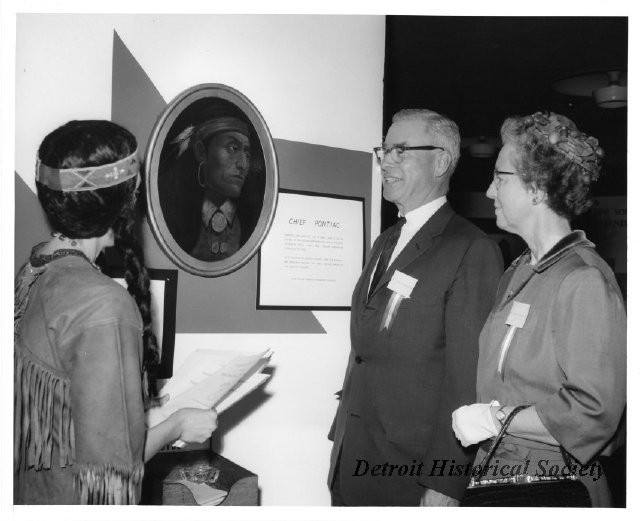Encyclopedia Of Detroit
Chief Pontiac
The Odawa (Ottawa) chief called Pontiac was known in his village as Obwandiyag. He was likely born about 1720 somewhere along the Detroit River. One of his parents was Odawa and he was raised in that tradition. Descriptions of Pontiac as an adult are contradictory. Contemporaries described him as “remarkably well-looking, of medium stature,” or “a tall man, not handsome.” He had several wives and at least one son.
By the age of 25 or 30, Pontiac was a leader who took part in anti-English councils and negotiations with the allies of the French. During this time, he also came under the influence of Neolin, a member of the Delaware tribe who was viewed as a prophet. This movement had some references to Christianity, but also urged the members of the tribes to return to their old ways of doing things. Pontiac adopted only part of the message, turning this message into an anti-English campaign that kept the European technology.
By 1763 Pontiac was an influential leader in the Detroit area. That year he led a surprise uprising against the British at Detroit, which failed when the British learned of the attack. He and his forces later returned and laid siege to the fort, but ultimately it was never taken. While his attack on Detroit failed, many of the other attacks made on other regional outposts by members of the loosely organized confederation, did succeed - 8 out of 12 resulted in victory for the Native Americans and their allies. These attacks are known as Pontiac’s War.
After his attempt in Detroit, Pontiac travelled widely throughout the areas now known as Ohio, Indiana and Illinois. His message to the Native People living there was that they should oppose the English and support or look to the French Father, as he called the King of France, for leadership. By 1764 the tribes of the Maumee and Wabash were in conflict with the Shawnee. Pontiac negotiated peace between these two groups.
Pontiac’s success led him to believe that he was the leader of a large confederation of Native American tribes. As a result, he began to act as if he were an absolute ruler. By 1768 he had gone from revered leader to a man without a home. On April 20, 1769 he was murdered by a nephew of Makatchinga, a Peoria chief of the Illinois Confederation in or nearby the village of Cahokia, Illinois.



